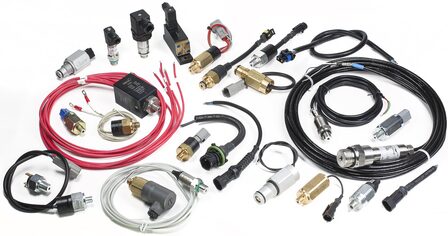Temperature switches - General information and Operating principle

GENERALITY
In industrial applications, automotive or wherever it is required that when a temperature value is reached, an instrument intervenes, which transforms it into an electrical signal to start the cooling cycle or to signal a specific
situation (eg too high temperature or too much low, alarms, etc.). These operations are generally managed by components, pre-calibrated at the factory or calibrated according to the application, which take the name of FIXED OR ADJUSTABLE THERMOSTATS.
PRESSURE SWITCHES OPERATING PRINCIPLE
FIXED BIMETALLIC THERMOSTATS
The sensitive element consists of two sheets of different metallic materials joined together. Since the two materials have different coefficients of expansion, a variation in temperature leads to a curvature of the lamina which can then act directly from the switch by operating the micro. These thermostats models can have Normally Open or Normally Closed SPST contacts.
GAS EXPANSION THERMOSTATS
The sensing element consists of a bulb sensor or a capillary and a housing. The system is pressure filled with an inert gas. Any change in temperature causes a change in the internal pressure of the system. This variation is measured by the disc spring system. This series of thermostats has been designed for applications involving heavy shocks and vibrations. These thermostats measure accurately and reliably even when they are exposed to very high mechanical loads. They are also resistant to high ambient temperatures and humidity. The thermostats are constructed entirely of stainless steel. Bulb lengths and different process connections are available to optimally meet the requirements of each application. these thermostats have adjustable intervention range and SPDT Exchange contacts.
APPLICATIONS
Find application in control systems, where at project
level it is useful or necessary to obtain a change of state for a specific
temperature value. For example, in domestic heating systems, the opening or
closing of an electrical contact operated by the sensitive element of the
thermostat produces the opening or closing of a solenoid valve which injects
hot water coming from the boiler or stops it. Or in automotive cooling systems.
A thermostat drives the fan of the engine heat exchanger (radiator) or oil
cooling pump.